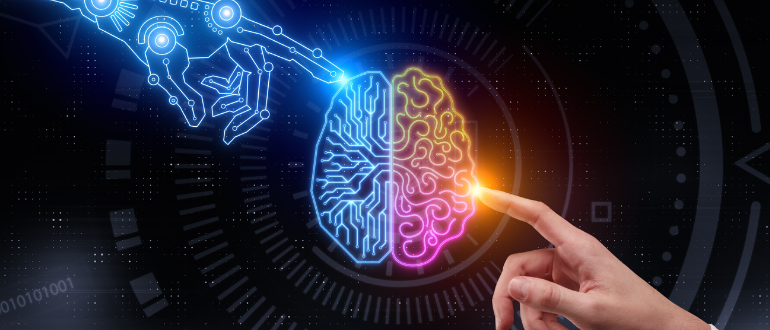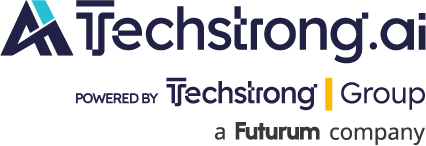
In the background of flashy AI headlines and speculative debates about the future of work, something quieter and more profound is happening. Autonomous agents, purpose-built AI systems designed to operate independently within defined workflows, are already reshaping how companies function. Not as assistants. Not as bolt-on productivity tools. But as a new workforce.
In telecom, logistics, creative operations, customer support and HR, these AI systems are no longer confined to pilot projects or isolated use cases. They’re handling planning, decision-making and execution in ways that mimic and often surpass traditional operational teams. What we’re witnessing is not just automation. It’s replacement.
At major companies, this shift is already translating into hard decisions. In recent months, Amazon’s CEO, Andy Jassy, acknowledged that generative AI and agentic systems are actively reducing the need for human labor across the organization. Microsoft has announced job cuts in global sales and operations, redirecting investment toward AI infrastructure. These are not theoretical shifts. They are structural reorganizations made viable by systems that can do the work of people, without pause and with the same overhead.
In early deployments, much of the work being handed over to agentic AI involves support operations. Customer service teams, once responsible for triaging tickets and resolving fundamental issues, are being restructured. AI agents can now classify, route and resolve many of these queries, escalating only when human intervention is essential. The agents don’t just follow rules. They learn, adjust and improve by drawing from historical data, integrating with APIs and adapting responses based on real-time feedback.
These same traits are showing up in logistics environments, where agentic platforms monitor stock levels, track shipments, anticipate disruptions and trigger preemptive actions. What was once a tangle of manual tracking and human coordination becomes a live, responsive system with AI agents orchestrating each moving part.
And in creative operations, copywriting, scheduling and campaign tracking, the shift is just as real. Agents generate initial drafts, test multiple versions and even make real-time adjustments based on performance data. They don’t just help marketers move faster. They change what it means to run a campaign.
An Operational Layer
In all these cases, what’s being replaced isn’t just manual effort, it’s an entire operational layer. Coordination. Decision-making. Optimization. These are the cognitive functions that used to belong to full-time teams. Now, increasingly, they belong to software that runs 24/7 and scales on demand.
The implications go beyond performance. Organizations are beginning to rethink their internal structures to accommodate this new layer of AI-native labor. Where humans once handled every stage of a workflow, new models combine AI agents with human supervisors who validate, intervene, or escalate only when needed. In this hybrid model, people don’t execute the work; they oversee the orchestration.
That oversight is becoming one of the most critical aspects of agentic system design. Because as these systems grow more powerful, companies are learning that deploying them without controls is a recipe for chaos. Thoughtful architecture matters. That means building in traceability, defining approval thresholds, setting up audit trails and creating fallback procedures when the AI doesn’t get it right.
This is where many organizations falter, not because the technology isn’t capable, but because they don’t yet have the cultural or technical infrastructure to manage autonomous systems at scale. The best deployments are those where AI is embedded not only in the task layer, but also in the governance layer. Success depends not only on what an agent can do, but on how it is monitored, reviewed, and held accountable, just like a real employee.
At the systems level, a new paradigm is emerging to support this shift. Instead of treating agents as isolated bots, some enterprises are moving toward an agentic mesh: a coordinated environment where agents with distinct roles work together across planning, decision-making and task execution. These systems aren’t static. They adapt dynamically, pulling data from APIs, triggering workflows and continuously learning from feedback loops.
Integrating Agentic AI Brings Questions
Of course, none of this is frictionless. Integrating agentic AI into a live business environment brings questions around job roles, reskilling, security, compliance, and organizational morale. Many teams face an uneasy tension between excitement and fear, between opportunity and displacement.
But that tension, while uncomfortable, is not a reason to delay. It’s a reason to design better. When implemented thoughtfully, agentic AI can elevate teams, not just replace them. It can offload the repetitive and the routine so humans can focus on judgment, creativity and leadership. The real shift is not from human to machine, it’s from execution to oversight.
At PayPal, I led the deployment of a production-scale agentic AI platform that now powers core customer operations workflows. These systems interpret natural language tickets, classify issues, and trigger autonomous resolution — all while learning continuously from feedback loops. We didn’t just build AI tools; we transformed how work gets done.
Equally important was preparing the organization for this shift. We developed an internal AI-readiness framework, facilitated training across teams, and introduced multi-tiered governance protocols to monitor every decision the AI made. This helped our teams evolve from execution roles to oversight roles, including supervising, interpreting and refining agentic output. The transition was both technical and cultural.
In parallel, I advise U.S. startups serving small and mid-sized businesses, helping them adopt agentic systems without the enterprise overhead. This work supports national digital equity. Bringing automation to underserved segments of the U.S. economy.
As more enterprises cross this threshold, the organizations that thrive will be those that stop viewing AI as a set of tools and start treating it as part of the workforce. They’ll recognize that agentic AI isn’t just a back-office upgrade; it’s a change in how work is structured, supervised and scaled.
We are stepping into an era where autonomous systems will no longer be optional. They will be expected. And the way we plan for them today, technically, strategically and ethically, will determine whether they amplify our capacity or quietly take our place.
What excites me most about this agentic shift is its potential to democratize productivity, allowing organizations of any size to scale intelligently and ethically. But the excitement must be matched with responsibility. The systems we build today will define how future generations work, create and thrive.
Agentic AI can either amplify human judgment or erode it. That’s why my focus is on building platforms that combine autonomy with accountability systems that operate at scale but respect intent, context and user dignity. The organizations that will thrive are those that embrace this responsibility not as a compliance exercise, but as a design principle.

